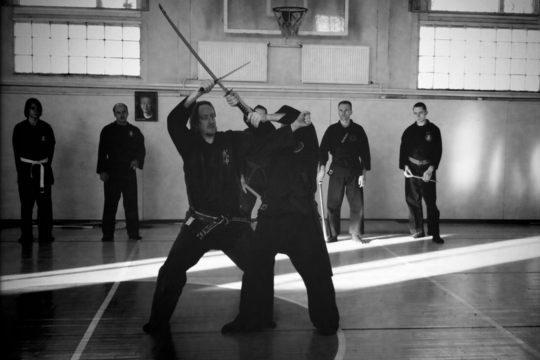Think With Your Feet!
From Shiro Kuma by kumablog
 In the Bujinkan, everything comes down to the quality of your footwork. As Hatsumi Sensei puts it, “move with your feet, the hands will follow.”
In the Bujinkan, everything comes down to the quality of your footwork. As Hatsumi Sensei puts it, “move with your feet, the hands will follow.”
Since we are babies, our hands are the first tool we use to discover the world, not the legs. As a consequence, our feet are under-trained, but Bujinkan training modifies that. The Bujinkan way of moving and walking in particular.
Throws and immobilizations define Jūdō. Armlocks and circles represent Aikidō. And Karate is about Kicks and punches. In the same way, our footwork defines the Bujinkan way of fighting.
But the term “footwork” is more diverse than you think. A translation is often accepted for what we believe it means, and not for the rich diversity of the language. In Japanese, there are many meanings for footwork. And they show different aspects of the same reality.
In Japanese, “footwork” is either Ashi Waza, (1) or Ashi Sabaki, (2) or even Ashi Hakobi. (3) And each one shows a different understanding in action. In his book “word and object,” Quine defines what he calls “conceptual schemes.” Words convey different interpretations that are often lost between languages. When translated into another language, some unsaid cultural aspects are lost in the process.
Each one of the three expressions for footwork bears a different meaning:
- Ashi Waza refers to a leg technique. It is purely mechanical.
- Ashi Sabaki insists more on how to “deal with” a situation, by using your legs. In a way, you “sort the problem” by using a leg technique. We can say that Ashi Sabaki uses Ashi Waza. (5)
- Ashi Hakobi is more about how you move your legs to take advantage of the attacker. Whether you are applying a leg technique or not. It also implies controlling your balance by keeping a low center of gravity. (6)
As you can see, the three concepts of “footwork,” contain more than what the translated term implied. Furthermore, the “move your feet” does not cover the reality of the movements you have to perform. In fact, we should say, “move your body.” Because when the body moves, the legs are moving too. But we don’t say it only because students would not get it. They would then move only the upper limbs instead of the legs. Humans are like that. Try to explain footwork by saying, “move your body” to a group of fresh beginners, and you will see what I mean.
When Sensei speaks about moving the feet, you have to understand what he means. The way I see it is, “move your body and your legs altogether so that your hips always stay above your moving leg.” (7)
After many years of teaching, I understand that to learn a Waza, you should first get the correct “footwork.” The rest comes naturally, and “your hands will follow.” Change the way you move your body with the legs and see how better you are performing the techniques. The improvement will amaze you. You can test it in your dōjō with a simple exercise. From Shizen no Kamae, “fall” into Ichimonji no Kamae. (8) You do it by pulling your hips backward (9) and keeping them above your leg. Don’t step back, but fall backward with the whole body. It is harder than you think, but it is the Bujinkan way.
Next class, try this, and begin to think with your feet!
_____________________
1 足技 Ashi Waza: (judo) foot technique; footwork
2 足さばき, Ashi Sabaki: footwork (in martial arts, sports, etc.)
3 足運び, Ashi Hakobi: gait; manner of walking; footwork (e.g., in sports). Characteristic way of moving, keeping the center of gravity low (center)
4 “Word and Object” by Willard Quine: https://en.wikipedia.org/wiki/Word_and_Object
5 捌く, Sabaku: to handle well; to handle deftly; to deal with; to manage; to settle; to sort; to process
6 運, Un: fortune; luck; progress, advance
7 The “moving leg” is the one doing the step. It is the front leg if you move forward. And the back leg, if you move backward.
8 In Japan, they tell you to “fall” into the Kamae. Not to “step back.” Here too, words are essential. They give you a hint on how to do it the correct way.
9 As if someone was pulling you from behind at hip level.
When are you joining the Koi community? More than 150 Gb of videos, documents and charts to download. Visit us today http://www.koimartialart.com
…
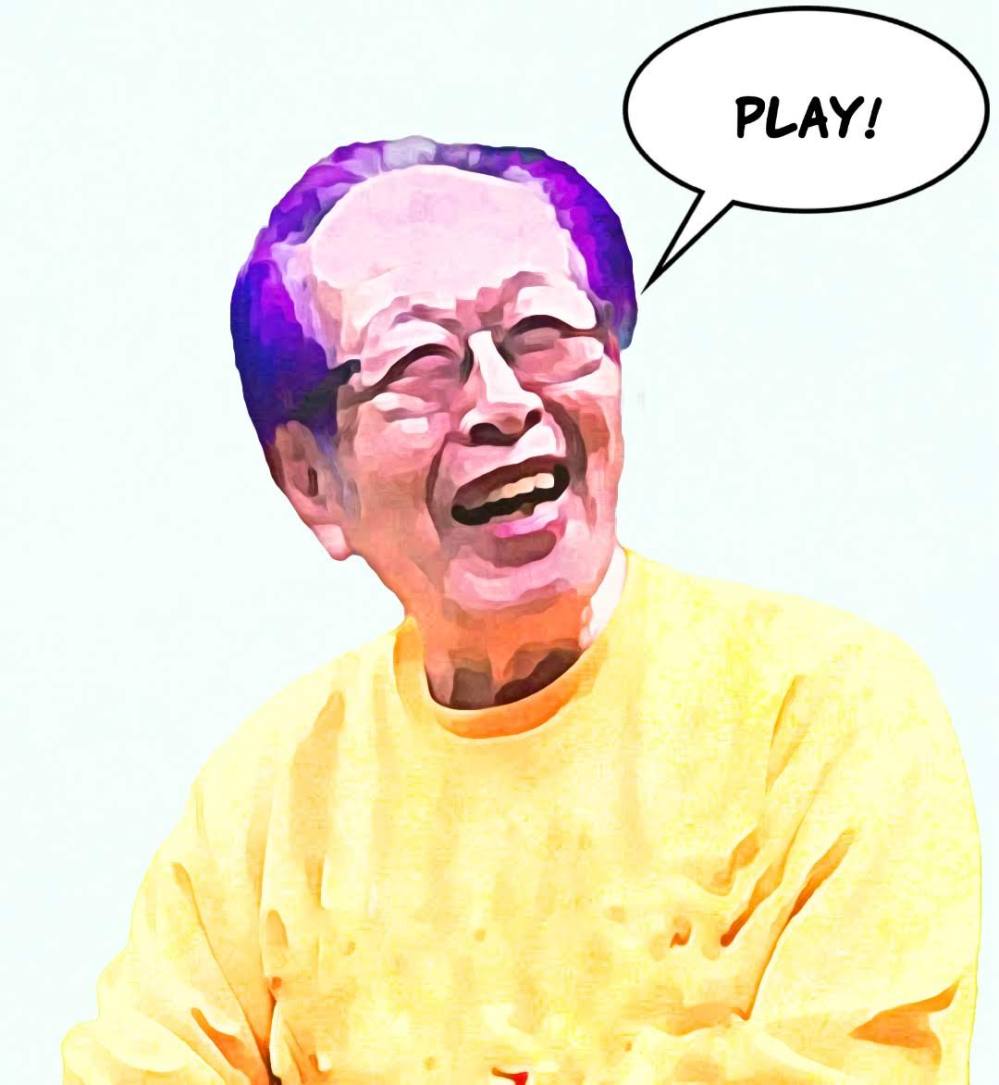 Today many practitioners are more interested in collecting Waza than understanding their purpose. Not so many try to find out the aim of a Waza.
Today many practitioners are more interested in collecting Waza than understanding their purpose. Not so many try to find out the aim of a Waza.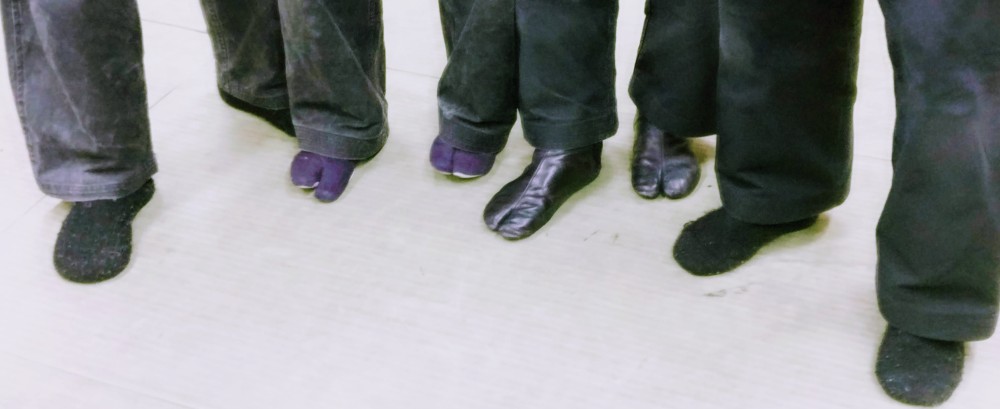 Training is not limited to dōjō hours, homework is necessary. Once you have repeated many times the same moves, your Taijutsu gets better. To train your Kihon or your Waza has a name in Japanese: it is Tabi Tabi. (1)
Training is not limited to dōjō hours, homework is necessary. Once you have repeated many times the same moves, your Taijutsu gets better. To train your Kihon or your Waza has a name in Japanese: it is Tabi Tabi. (1)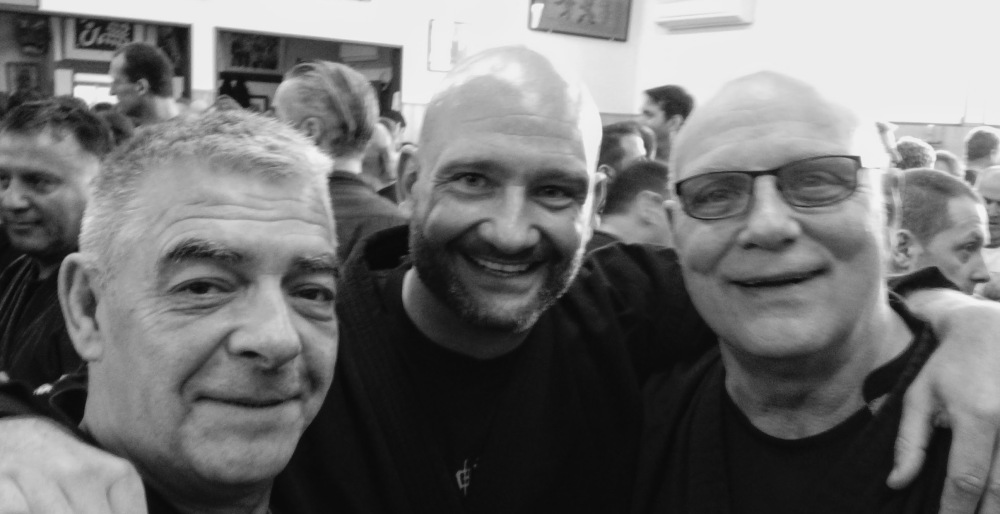 It is your fault if you cannot do the movements correctly. I found a quote by Sensei saying, “Humans have yet to dwell upon the consequences of their actions. Most people spend their time finding fault in the action of others rather than their own.” This is Sekininkan, the sense of responsibility. (1)
It is your fault if you cannot do the movements correctly. I found a quote by Sensei saying, “Humans have yet to dwell upon the consequences of their actions. Most people spend their time finding fault in the action of others rather than their own.” This is Sekininkan, the sense of responsibility. (1)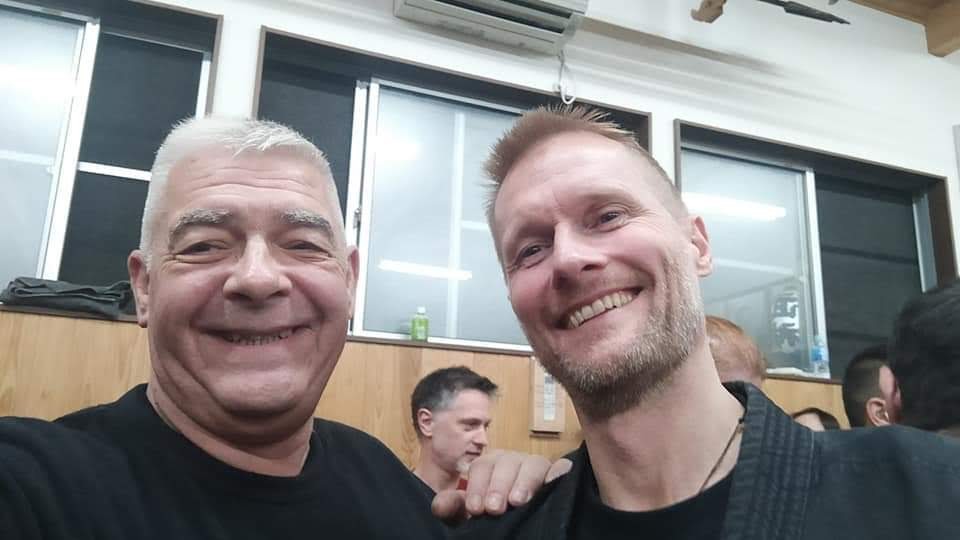 My friend Philip Pihl wrote from Japan yesterday after class. Hatsumi Sensei expressed his mastery of Mutō Dori using the body, the sword, and the knife. Mutō Dori is still the major training point to learn and understand how to express it with our Taijutsu.
My friend Philip Pihl wrote from Japan yesterday after class. Hatsumi Sensei expressed his mastery of Mutō Dori using the body, the sword, and the knife. Mutō Dori is still the major training point to learn and understand how to express it with our Taijutsu. 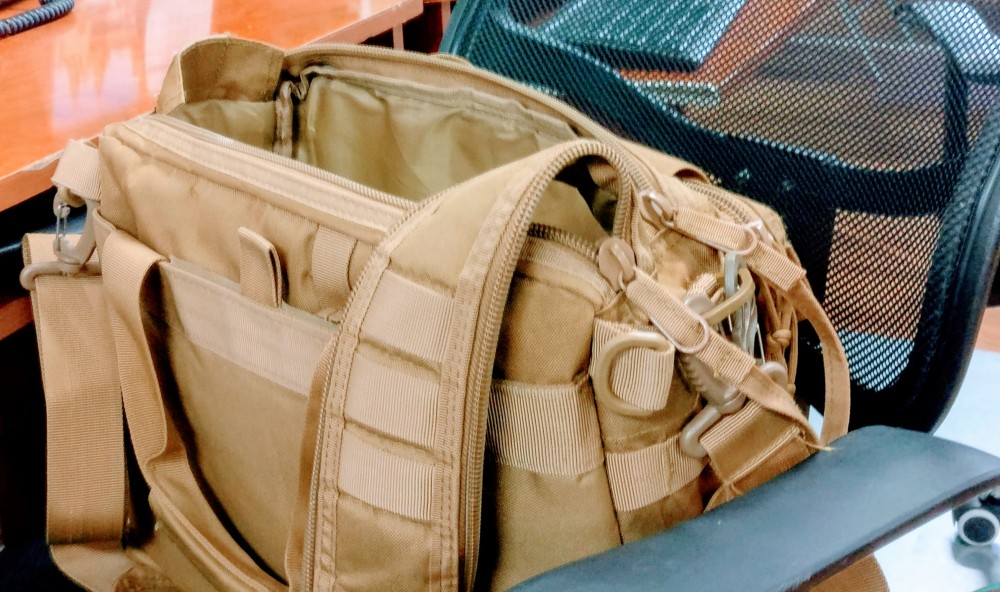 When you go out for a trek in the mountains, you carry a backpack. Everything you might need during the long hours of walking is inside.
When you go out for a trek in the mountains, you carry a backpack. Everything you might need during the long hours of walking is inside.

